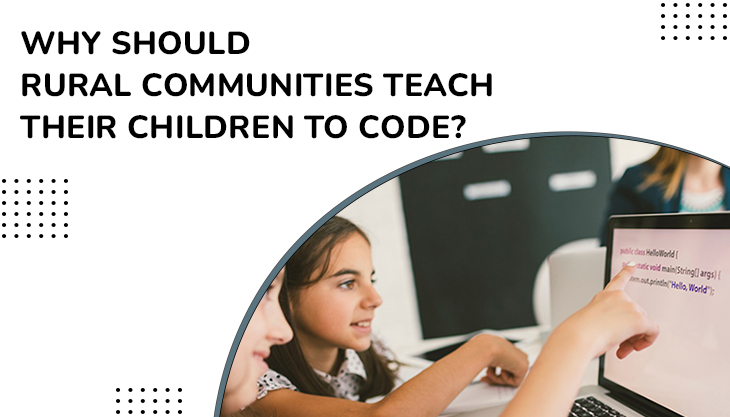Individuals with IT and programming skills, as well as innovation, unconstrained problem solving, teamwork, and active listening skills, are in high demand in India's increasingly digitizing industry. Unfortunately, there are currently too many youngsters in India who do not have access to electronic tools or opportunities to master these skills.
Barriers to acquiring digital skills include:
Many children and adolescents in India must overcome various obstacles before being given the opportunity to develop digital skills. The absence of availability to energy, the internet, and digital gadgets has exacerbated India's digital divide. Only 47% of Indian homes had access to power for more than 12 hours per day in 2017–18. Furthermore, only 24% of homes have internet connectivity, with the number falling as low as 15% in remote regions.
During the coronavirus pandemic in India, when youngsters were forced to adapt to constraints head-on, 29 million schoolchildren in the country lacked access to a digital device. Furthermore, only 38% of Indian households are digitally literate. We define digital literacy as the skills and expertise required to be a successful, safe, and critical user of multiple computers. Rural areas have a far lower rate of digital literacy, at 25%.
Techasoft Foundation collaborates with Indian organisations because we recognise that we alone cannot tackle these large access concerns. Regardless, we are devoted to making a difference for the young people who require the most digital skills and literacy. We collaborate with organisations across the country that are dedicated to providing poor and digitally excluded youth with access to programming and digital skills. Our collaboration model entails the following:
* Co-creating educational experiences.
* Providing open-source learning materials for free.
* Creating customised training programmes.
* Providing assistance with technological solutions.
Techasoft Foundation has been in the forefront of bridging the gaps in India's educational system. To give youngsters in underserved neighbourhoods with education and exposure to equipment and educational resources, we expose coding to youngsters in hard-to-reach, impoverished communities around the country. The training's purpose was to increase the youth's confidence in programming so that they could go on to educate kids in their communities.
It was critical that the initiative be localised in order to be effective. We modified our educational materials and teaching methodologies to make it more relevant to the learners' contexts, and we collaborated with volunteer translators to convert the material into Hindi, India's most frequently spoken language.
Learning to code will help children prepare for the world in which they now live. Programming is far too vital to be left just in the hands of computer science departments; It can be taught efficiently outside of that field as well. Aside from the practical benefits of learning to code, developing a game or animation may be a lot of fun for children. Techasoft Foundation understands the value of code literacy, and we intend to teach coding to children in schools located in remote areas.
For most youngsters in India, especially in rural regions, computer literacy remains an unattainable luxury. Most schools lack computers on which children can learn fundamental computer skills. As a result, the divide between urban and rural children is expanding, and poverty is dragging impoverished rural children out of school, putting their future at risk. The same may be said for code literacy. Code literacy education is virtually unavailable to rural youngsters.
There is a worldwide tendency to make programming a compulsory subject in primary education, equating it to reading, writing, and counting, in order to better prepare children for the future. For the time being, India seems to have plans for prosperity, thus teaching code proficiency is the only way for rural youngsters to join the train. Participants who learn to code have the opportunity to continue their education and/or obtain a career that they would not have been able to obtain otherwise.
The children we are looking for are between the ages of 6 and 15 (primary and secondary school), and we pay special attention to the gender ratio (50/50). We will teach 40'000 youth in the first year and 75'000 in the second. The demand for coding in rural schools is extremely great, despite the fact that state institutions do not provide these courses. We open up a whole new element of the project for a prosperous future by educating these youngsters how to code.
Where we're going to take the show next:
Techasoft Foundation is extending this programme , using a train-the-trainer methodology, to train youngsters from marginalised neighbourhoods. We will assist these young people in paving the path for young learners all around the country to learn coding and digital skills once they have finished the course. We are incredibly excited to continue providing technical knowledge and coding education to children across India.

